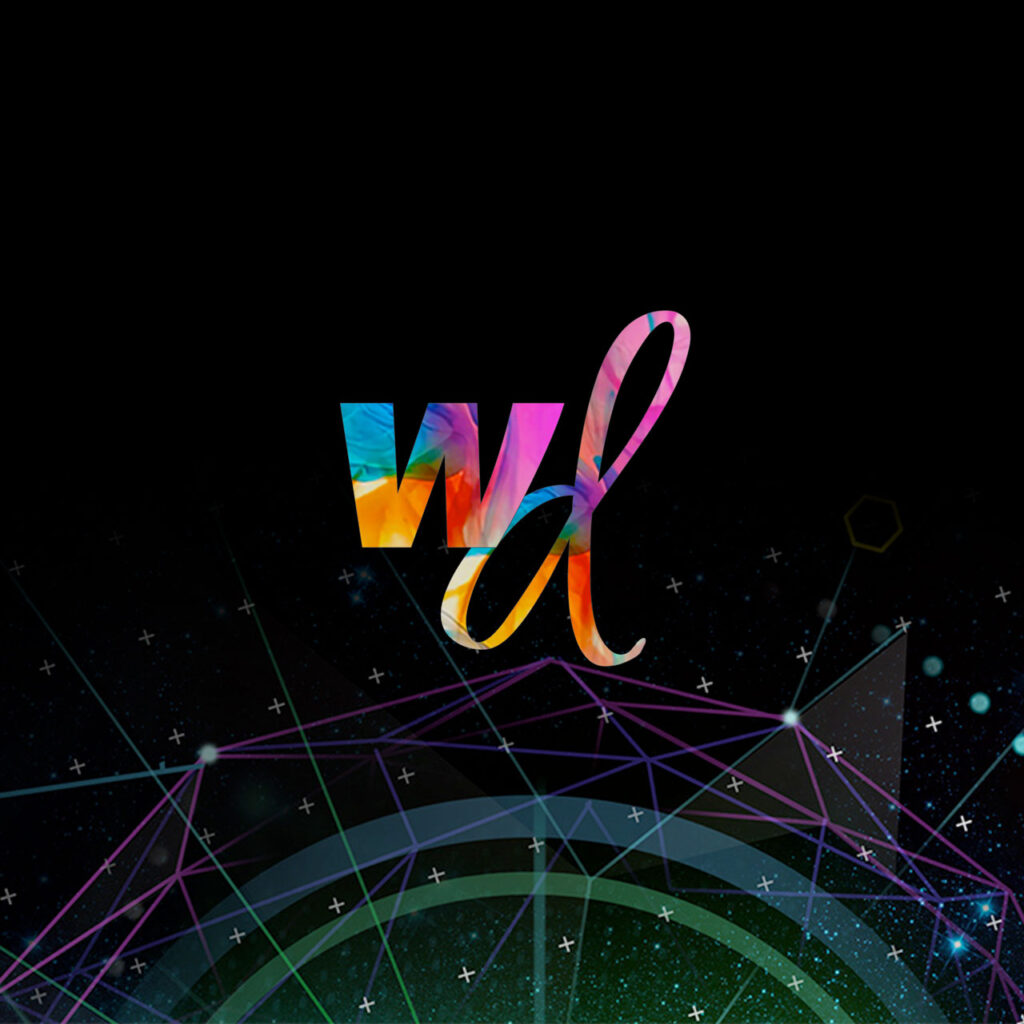A look into the growing importance of digital shelf management for CPG brands and strategies to maximize sales in this fast-growing channel.
As grocery ecommerce approaches 10% of category retail sales, winning at the digital shelf is more critical than ever for consumer packaged goods (CPG) brands. Mastering the right strategies for ecommerce visibility and discoverability can boost sales and improve long-term market share.
 Key Takeaways
Key Takeaways
US grocery ecommerce will approach 10% penetration of a $1.410 trillion retail category this year, underscoring the critical importance of digital shelf management.
- The digital shelf is a massive, fast-growing opportunity for CPG brands to win market share—and influence physical retail. As grocery ecommerce approaches 10% penetration of a $1.410 trillion category this year, brands are intensifying efforts to win the battle for mindshare and market share at the digital shelf. Via research and discovery, digital’s further ability to influence 90% of grocery sales in physical stores makes the stakes even higher.
- CPG brands must adapt to the speed of digital to win at ecommerce. While the digital shelf draws parallels to the physical shelf, it is faster, more dynamic, and tougher to navigate. Brands that don’t build their digital IQ fast enough are most susceptible to disruption.
- Brands must prioritize their investments—in time and money—to the right retail media channels and the right tactics. Retail media networks are expanding faster than growing budgets can accommodate. Brands need a disciplined approach to digital shelf content and advertising strategies to defend their position and gain market share across relevant channels.
- Sophisticated CPG brands get the basics right and use advanced digital shelf strategies to get an edge. Brands that don’t have a foundation of core key performance indicators (KPIs), inventory-management best practices, and product content best practices are falling behind the curve. Getting ahead of the competition entails using advanced analytics and advertising strategies to build their brands and grow market share on the digital shelf.
The Digital Shelf Opportunity
Bai was perhaps the first major CPG disruptor at the digital shelf. The antioxidant-infused flavored water brand outperformed better known beverage companies like Coca-Cola and PepsiCo to emerge as the No. 1 selling beverage brand in its category and was named Amazon’s vendor of the year in 2015. In 2016, Bai was snatched up in a $1.7 billion acquisition by Dr Pepper Snapple Group.
What was the secret of Bai’s surprising success on one of the fastest-growing channels for CPG products? In part, the brand tapped into an unmet customer need: the desire for a low-calorie flavored-water beverage without artificial sweetener. Part of the category’s appeal was its perception as a better-for-you option, except most options either had high sugar content or used artificial sweetener. Bai uses naturally occurring stevia extract for sweetener.
While Bai invested in keyword search optimization—a useful tactic that takes advantage of category white space as shoppers search for “drinks with natural sweetener”—it also prioritized brand-building.
According to John Denny, vice president of digital commerce at CAVU Ventures and former vice president of ecommerce at Bai Brands, the team obsessively focused on the little things that drive consumer choice at the digital shelf.
The story of the digital shelf begins, as retail and ecommerce stories so often do, with the power of the brand. With endless aisles of competition and various ecommerce platforms to master, brand is the one thing that truly scales.
 Winning at the Digital Shelf
Winning at the Digital Shelf
Amid the recent surge in grocery ecommerce—and a corresponding rise in retail media—CPG brands must now grapple with the reality of what it takes to succeed in the digital realm.
Here, the rules that determine who wins in-store no longer apply. The world of shopper and trade marketing exists in the physical store environment, where shelf space is finite and distribution matters. Grocery ecommerce offers shoppers an endless aisle where more brands can compete on a greater number of attributes.
Brands encountering the complex, fast moving, and dynamic world of the digital shelf require new skills to compete against the growing number of disruptor brands. Amazon aggregators like Thrasio and Perch have infused these brands with fresh capital, intensifying the competition. Winning at the digital shelf has never been harder, but the rewards have never been greater.
 The Surging Grocery Ecommerce Market
The Surging Grocery Ecommerce Market
Even pre-pandemic, grocery was consistently among the top-gaining ecommerce categories. That trajectory accelerated substantially in 2020.
Grocery ecommerce has permanently accelerated and will continue to be a top-gaining category. Even as most ecommerce categories revert to their pre-pandemic trendlines, grocery is one category exhibiting clear evidence of enduring acceleration. We expect the category to post above-average increases over the next few years, suggesting these gains will be sustained.
Grocery ecommerce will approach 10% penetration in 2022. Ecommerce may still be a minor channel for food and beverage sales at 5.5% penetration, but the broader grocery market includes major sub-categories like pet products (36.0%) and health and personal care (16.5%), where ecommerce is a critical channel. As a result, total grocery ecommerce will approach the 10% milestone this year.
 The Rise of Retail Media Networks
The Rise of Retail Media Networks
Retail media advertising continues its rapid ascent as one of the fastest-growing channels of digital advertising.
- Retail media will continue to surge beyond the pandemic. Following massive gains in the range of 50% over the past two years, retail media is expected to add about $10 billion in incremental spend during each of the next three years even as growth rates begin to taper down.
- Retail media gains will be driven by advertiser demand and increasing supply. The proliferation and advancement of retail media networks is opening more inventory for brands, including upper-funnel formats like display, video, and connected TV (CTV) ads.
 CPG Ad Spend Migrates Online
CPG Ad Spend Migrates Online
CPG advertisers ramped up digital ad spend during the pandemic, and the momentum is likely to continue.
- CPG digital ad spend will jump another 15.1% this year following two years of outsized gains. Between 2019 and 2022, we forecast CPG digital ad spend to double, from $18.61 billion to $37.13 billion. Following a surge of 25.1% in 2020 and 38.6% in 2021, strong double-digit gains will continue.
- Nearly all CPG advertisers will increase retail media spend. Eighty-seven percent of CPG brands and 87% of beauty brands anticipate increasing their retail media investment in 2022, per a March 2022 McKinsey & Company study.
Key Players in the Digital Shelf for CPG Brands
Effective digital shelf management is as much about prioritization as it is about tactics. The multitude of digital shelves for CPG brands to manage—spanning digital pure plays, mass merchandisers, discounters, national grocers, regional grocers, drugstores, and convenience stores—can be overwhelming.
CPGs must ruthlessly prioritize their time and financial resources to the ecommerce channels they can reasonably accommodate, beginning with grocery ecommerce leaders like Amazon, Walmart, Instacart, and Kroger. (Note: As a multi-retailer platform, Instacart’s market share is not mutually exclusive from retail partners like Walmart and Kroger.)
 Amazon
Amazon
As the dominant player in ecommerce and retail media advertising, Amazon commands the spotlight in digital shelf management. It’s the primary competitive battleground, the first channel for nearly every CPG brand, and the foundation for the prevailing digital shelf playbook and nomenclature today. Companies that can’t compete effectively on Amazon are likely to struggle elsewhere.
Amazon pioneered many of the ad units that other retail media networks now model, including Sponsored Products (search), Sponsored Brands (keyword-based display and video), and Sponsored Display (audience targeting and retargeting). Amazon also has its own demand-side platform (DSP) for targeting ads off-site, plus a growing footprint of ad-supported CTV, including Freevee, Twitch, and exclusive rights to NFL Thursday Night Football.
 Walmart
Walmart
Walmart may be No. 2 to Amazon in ecommerce market share and retail media ad revenues, but it currently edges out the ecommerce giant in grocery ecommerce market share. The brick-and-mortar leader leveraged its physical store advantage for curbside pickup orders to pull ahead of Amazon in 2020—and hasn’t looked back.
In 2021, Walmart Connect inked a major partnership with The Trade Desk to tap its first-party shopper data for targeting and measurement in off-site display, video, and CTV inventory. This year, Walmart implemented a second-price auction—finally bringing it to parity with Amazon and Instacart—that many brands considered critical for scaling their investment.
The second-price auction model—popularized by Google search, where the highest bidder pays 1 cent more than the second highest bid—ensures brands don’t bid against themselves and overpay. After the company implemented the practice in early June, average advertising rates immediately came down, per data from Skai. Despite the near-term haircut to monetization, this will be to Walmart’s long-term benefit, as it gives brands more confidence to invest in the platform.
 Instacart
Instacart
As the front door to grocery ecommerce for more than 750 national, local, and regional grocery retailers spanning 70,000 US locations, Instacart is a rising star at the digital shelf. Instacart’s multi-retailer model delivers scale, unique customer insights, and incredible depth of visibility into physical grocery store sales. That makes for not only a competitive digital shelf environment but also a hugely promising retail media network. Instacart drew 25.7 million shoppers to its app and website in June 2022, per Comscore.
 Kroger
Kroger
With nearly 2,800 locations, the nation’s largest grocery chain is too big to ignore for most CPG brands—and certainly food and beverage brands.
Kroger leans on its substantial first-party dataset from its loyalty card, which captures 97% of transactions, and its data science subsidiary 84.51° for powerful customer segmentation and targeting. Kroger’s partnership with third-party publishers and Roku for CTV inventory provides brands with strong upper-funnel capabilities, making up for the fact many of Kroger’s ecommerce transactions flow through Instacart rather than Kroger’s web properties—which nevertheless attracted 27.7 million shoppers in June, per Comscore.
 The Next Tier
The Next Tier
Several large grocery, mass merchandise, and drugstore retailers comprise the next tier of digital shelves.
Target lacks the scale of Walmart in grocery but operates a best-in-class curbside pickup capability that offers better economics for CPG brands. Costco Wholesale is a huge player in grocery but is less digitally inclined than the competition and lacks a robust retail media offering. Albertsons Companies operates more than 2,200 supermarkets nationwide, including 1,700 in-store pharmacies. Walgreens and CVS are the two largest national drugstore chains, boasting larger digital audiences than leading national grocers, and are considered critical for health, personal care, and household essentials brands.
Disruptive Trends and Opportunities
 Inflation Hits CPG Brands
Inflation Hits CPG Brands
Amid rising inflation, price-sensitive grocery shoppers are switching brands, trading down, and shifting back to brick-and-mortar. Grocery ecommerce has incurred the biggest spike in inflation this year, per Numerator, as shopping behavior swings back toward more cost-effective channels like club stores.
The digital shelf gets more competitive at the same time consumers are turning their backs on national brands. Within specific shopping channels, consumers are trading down to cheaper brands, particularly private label. The threat is substantial, as private label penetration on grocery websites runs above 20% in several categories, including home, deli, organic, and meat.
 Retail Media Moves Up-Funnel
Retail Media Moves Up-Funnel
Retail media advertising is quickly shifting from sponsored search into upper-funnel formats like display, video, and CTV.
As many brands battle over the search box, savvy players are looking up the funnel. They’re using purchase-based targeting to drive long-term brand-building and make bottom-funnel placements more effective. Upper-funnel placements can be found within the owned-and-operated assets of retail media networks, as well as third-party media channels like Facebook and Pinterest.
A minority percentage of various grocery store customers are reachable on the retailer’s website, while the majority can be found on the open web, according to May 2022 research from Epsilon. Hence, much of the ability to drive brand purchase via ecommerce or in-store resides outside the primary digital shopping channels.
 Offline Sales Attribution Data Is the Sleeping Giant of Retail Media
Offline Sales Attribution Data Is the Sleeping Giant of Retail Media
Synthesizing data could mean a ten- to twentyfold increase in attribution. Nearly 95% of food and beverage sales and 90% of total grocery sales transact in-store, but there’s currently limited visibility into how retail media ads influence these sales. Even assuming that online ad exposure drives modest offline-sales lifts, total attributed sales could be several times higher than ecommerce data alone.
Citing recent research from Walmart, Mike Black, CMO at Profitero, said 82% of Walmart shoppers use their smartphones while shopping for groceries, and 43% use it to compare brands and products on Walmart.com.
As the link between online and offline becomes better understood, grocery retailers with the biggest store footprints—Walmart and Kroger—will gain the upper hand. Walmart boasts the largest scale in grocery, but Kroger’s loyalty card advantage could prove more important in the measurement footrace.
 Physical Stores Are the Next Major Media Channel
Physical Stores Are the Next Major Media Channel
Stores with big footprints offer audience reach similar to any scaled media channel—even if retailers don’t fully appreciate the opportunity just yet. In fact, physical store audiences for many leading multichannel retailers far outpace their digital audiences, in some cases surpassing 100 million visitors per month, according to recent analysis from Placer.ai.
As brands realize the value of reaching these audiences at contextually relevant moments close to the point of purchase, the tantalizing mix of branding and performance advertising should attract both national media and shopper marketing budgets.
Acting on the Opportunities: How to Win the Digital Shelf
Several digital shelf experts weighed in on the relative importance of product content and creative, pricing, advertising, metrics, and inventory strategies. While few agreed on which were the most important, they reached broad consensus that all are important and interconnected.
Experts concur that certain strategies are foundational and essential for success, whereas other strategies could help brands go on offense.
 Focus on Metrics that Matter
Focus on Metrics that Matter
Julie Liu, national manager of commerce media at Ghirardelli Chocolate Company, agreed: “Create some sort of scorecard so that you can measure things, at least for Amazon, like glance views and conversion rate.” Glance views of the product detail page indicate overall demand and interest for a product, while conversion rate is a signal of how well the page content communicates product benefits and attributes to drive purchase. Scorecarding can also establish baseline criteria and KPIs for things like product descriptions, product content, and ratings and reviews.
Beyond sales growth, the first metric most CPG brands manage is return on ad spend (ROAS)—and its close companion advertising cost of sales—which speaks the language of CMOs and CFOs by incorporating profitability into marketing spend.
These performance marketing metrics are useful, but they don’t capture the full picture. Black likens the digital shelf to the physical store shelf, where the ultimate arbiter of success is market share. The digital shelf, however, requires brands to understand and apply leading indicators of market share, such as share of search, to ensure brands are visible and appearing on page one of search results. Similarly, share of voice accounts for all paid and organic brand impressions, including those above the fold.
Smart brands look beyond ROAS, which Bobsled founder Kiri Masters called a “blunt instrument.” It’s a short-term KPI that doesn’t always align with objectives, nor does it necessarily maximize sales outcomes. Any brand can show a high ROAS if they bid only on the most niche keywords, but the return comes at the expense of volume.
Brands should instead apply more relevant metrics and leverage various formats across different retail media networks to map against the right phases of the marketing funnel. New-to-brand sales, for example, is a metric that helps brands manage toward long-term brand growth, even if at the expense of near-term profitability.
The most sophisticated brands are diving headfirst into advanced analytics tools like Amazon Marketing Cloud to quantify how various tactics perform and unearth new insights.
 Prevent Out-of-Stock Inventory
Prevent Out-of-Stock Inventory
Brands that fail to manage inventory can sink their entire digital shelf strategy. An out-of-stock product not only loses a sales opportunity but also damages the product’s organic search ranking, which takes time to restore once the product is available.
The basic blocking and tackling of inventory management is simple: Keep eyes on the channel and make sure inventory doesn’t get too low—if it does, stop running ads for those product listings to slow demand. CPG brands need to keep a more watchful eye than ever with out-of-stock rates on Amazon running the highest in categories like grocery, health and personal care, pet, and beauty, per CommerceIQ.
Avoid negative downstream effects of stockouts with dropshipping. Use the tactic as a safety valve to ensure 100% product availability, according to Patrick Miller, co-president of digital commerce at Edge by Ascential. Although dropshipping economics aren’t as good as selling directly on marketplaces, it’s better than going out of stock.
 Expect new partnerships and ad products in 2023.
Expect new partnerships and ad products in 2023.
- Off-site inventory will proliferate as retailers continue to ink deals with publishers and supply-side platforms (SSPs) that want in on the action.
- Amazon competitors with larger brick-and-mortar footprints have a key advantage with in-store media, especially as consumers return to shopping in-person.
- More retailers will provide custom audience segmentation, a solution that has exploded in popularity over the past year, according to Merkle’s August 2022 survey of US retailers and brands.
Prioritize Your Brand’s Visual Presence
CPG brands that merely repurpose existing marketing and packaging content for their product listings will struggle on the digital shelf. At a minimum, brands should use content designed for thumbnail-sized viewing. Jehan Hamedi, CEO at Vizit, said CPG should engage in “debranding” to reduce the complexity of brand logos and imagery to fit the smaller screen: “While these types of change result in packaging imagery that may be slightly different than in-store versions, testing has shown that these mobile-first alterations have a significant impact on conversions and consumer sentiment.”
To maximize impact and the likelihood of conversion for each product listing, CPG brands should include five or six images, at least one video, and enhanced content (“A+ content”) like 360-degree views and comparison charts to highlight product benefits.
Leading brands obsess over details. They establish a “brand identity that’s going to stand out on the digital shelf,” CAVU Ventures’ Denny said. Debranding is a first step in the process, but true brand resonance comes from using the right visual elements in the right combinations.
Incidentally, Hamedi noted the importance of these exact same attributes on the digital shelf. Vizit’s analysis of cough and cold medicine brands found products with strong visual representations of fruit, such as cherry or grape, outperformed the competition on visual engagement.
While these are useful, there is an art and science to which unique combinations of visual elements will resonate by brand, product, and category. Visual AI tools can help brands determine the optimal combinations in branding, packaging, and other product imagery.
Systematically Refresh Your Product Content
Brands should begin by getting the basics of product titles and descriptions right to increase visibility in paid and organic results and improve conversions. Colgate-Palmolive’s Hassenfelt said brands should have at least one top keyword in the title, five bullet points, and a minimum of 50 ratings and reviews with a 4.2 to 4.8 rating.
Several experts said a common shortcoming is infrequent updates to product listings. Hassenfelt recommends quarterly. A stronger cadence of updating product listings encourages basic hygiene, better alignment with consumer trends, and use of more seasonal product content.
Ratings and reviews can show brands what customers want and don’t want, like and don’t like. This feedback can help brands see where their product descriptions are missing the mark and which attributes are worth emphasizing in product content. It’s an untapped gold mine of information that reveals how consumers think about purchases in their category and how their brands measure up—for better or worse.
Optimize Advertising for Branding and Performance
Advertising is ideally an amplifier for great product content, but too often it functions more as a tax on subpar content. First and foremost, brands need visibility on the digital shelf. brands should have at least one top keyword in the title, five bullet points, and a minimum of 50 ratings and reviews with a 4.2 to 4.8 rating.
There’s no getting around the imperative of organizational focus on search and SEO. “There’s just such a huge opportunity with search,” Ghirardelli’s Liu said. “We really need to make sure we’re funded appropriately there before exploring mid- or upper-funnel tactics.”
Brands need to have command of the most important keywords and keyword combinations for each product listing. There’s potential for mining value in the long-tail of search terms, but resource-constrained brands should stick to the pareto principle.
In a thin-margin industry, it’s critical to keep bid prices in check—hence, the importance of using a second-price auction. CPG brands should avoid bidding against themselves when they have multiple brands in the same category. Being mindful of broad search terms and ensuring cross-team coordination of keyword lists can minimize this wasted spend.
Effective use of branding and performance ads is where CPG leaders separate from the pack. The smart money in retail media ads is aggressively shifting the mix toward upper-funnel formats like display, video (both on-site and off-site), and CTV.
CPG brands should leverage “digital endcaps” by running sponsored brand display ads and video ads, using hero imagery above search results to establish brand-building and awareness among category-searchers. In addition to brand-building, they’re effective performance ads that deliver above-average ROAS—probably because a lot of brands have minimally invested in these formats.
Brands can bring the digital shelf to their customers, outside the competition of ecommerce sites. CPG brands should be leveraging DSP offerings—like Amazon DSP, the Walmart–Trade Desk partnership, or Kroger’s private marketplace—to target customers on third-party publishers and CTV inventory. This extends reach to higher-value audiences with the benefit of closed-loop attribution.
Display and video ad units like MikMak Commerce use click-to-cart technology to help shoppers directly add brands to their online grocery carts on Amazon, Walmart, Target, and others. This extends the digital shelf to shoppers outside of ecommerce sites, while essentially affording digital shelf exclusivity.
Use analytics to quantify the impact of branding and performance. Sophisticated brands and agencies are digging into Amazon Marketing Cloud and other analytics tools to understand advertising effectiveness across different formats. For example, most sponsored product ads that lead to purchase convert within 2 hours, whereas most streaming video ads convert outside of three days, according to a February 2022 study from Perpetua and WARC.
Taking it a step further, brands can analyze the interaction between branding and performance units to determine incremental impact and the optimal mix of impressions.




 Key Takeaways
Key Takeaways

